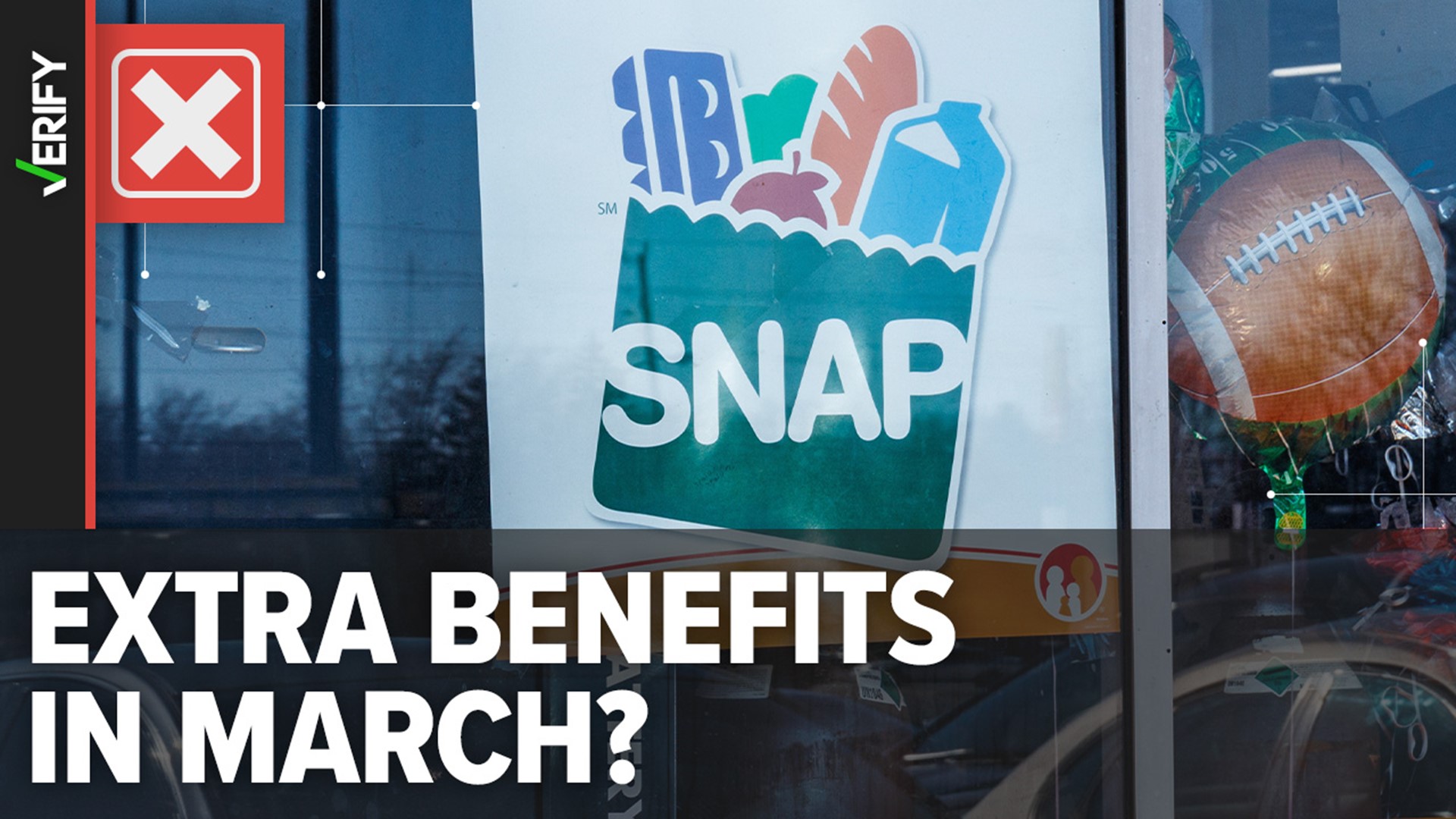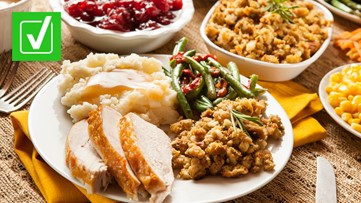The Supplemental Nutrition Assistance Program (SNAP), previously known as food stamps, is a federal program that helps people with low incomes to buy food. During the COVID-19 pandemic, the federal government provided SNAP recipients with additional benefits.
Several viewers texted VERIFY to ask if SNAP recipients will continue to get “extra stamps” in March.
THE QUESTION
Will SNAP recipients continue to receive extra benefits in March?
THE SOURCES
THE ANSWER
No, SNAP recipients will not receive extra benefits in March.
WHAT WE FOUND
The Supplemental Nutrition Assistance Program (SNAP) is a federal program that gives families with low incomes a debit card they can use to purchase certain food at stores. Although it’s a federal program, SNAP is run by the states.
The 2020 Families First Coronavirus Response Act increased funding for SNAP so states could provide “extra allotments” to families receiving SNAP benefits. This increased the monthly allowance families could spend using their SNAP cards.
Although the federal government continued making extra allotments available into this year, 17 states voluntarily chose to stop giving SNAP recipients additional benefits before the start of 2023. SNAP recipients in those 17 states will not see changes in their monthly benefits between February and March.
When Congress wrote their budget bill for 2023, they included a provision to end the extra allotments for all states in February 2023.
So in states that had still been providing SNAP recipients with this increased allowance, people will have fewer SNAP funds to spend in March than they did in February.
In total, that’s 32 states, plus Washington, D.C., Guam and the U.S. Virgin Islands, the United States Department of Agriculture (USDA) says. South Carolina ended their emergency allotments a month early, meaning the state’s SNAP recipients last got an increased allowance in January.
The USDA has a list of states that will be affected by the end of emergency allotments at the end of February. You can find the list here beneath the header “Acknowledged Extensions (through February 2023).”
According to the Center on Budget and Policy Priorities, every household in those 32 states will receive at least $95 less a month, and some households will see reductions of hundreds of dollars per month. How much a household loses in SNAP benefits per month will depend on the size of the household; whether there are children, disabled people or adults over 60 and the household income of the residents, the Center on Budget and Policy Priorities says.
Still, SNAP recipients will not return to pre-pandemic levels of SNAP benefits. According to a Jan. 27, 2023 blog post by the USDA, the average monthly SNAP benefits per person pre-pandemic was $121; that number is estimated to be $169 per person in March, following the end of emergency allotments.
There are two reasons for the increase in benefits from pre-pandemic levels, the Center on Budget and Policy Priorities says. The first is because of annual cost-of-living adjustments, which automatically change the amount of benefits SNAP recipients receive based on inflation. The other reason is because of an October 2021 change by the USDA to make SNAP benefits more closely reflect the cost of a healthy diet.












